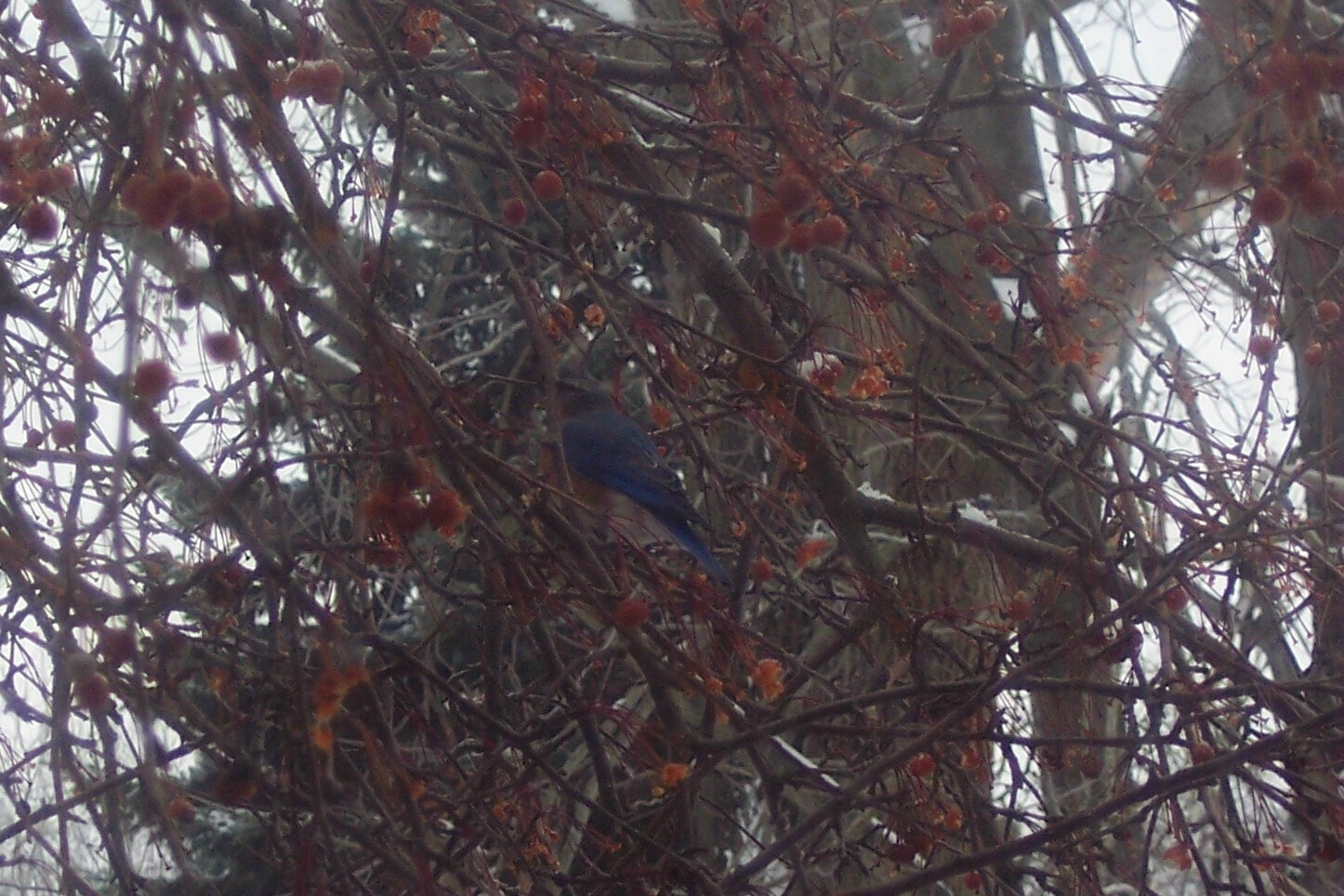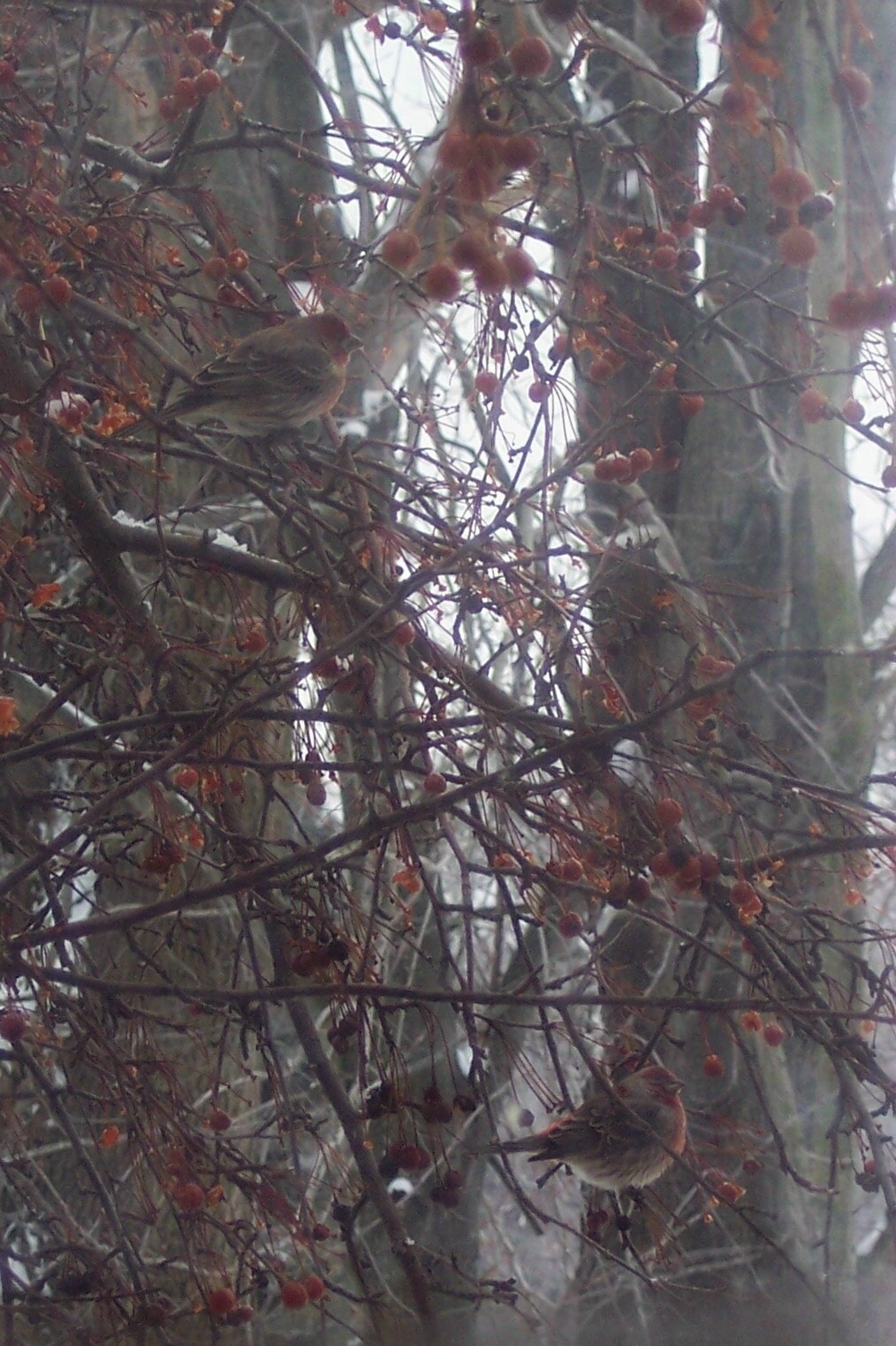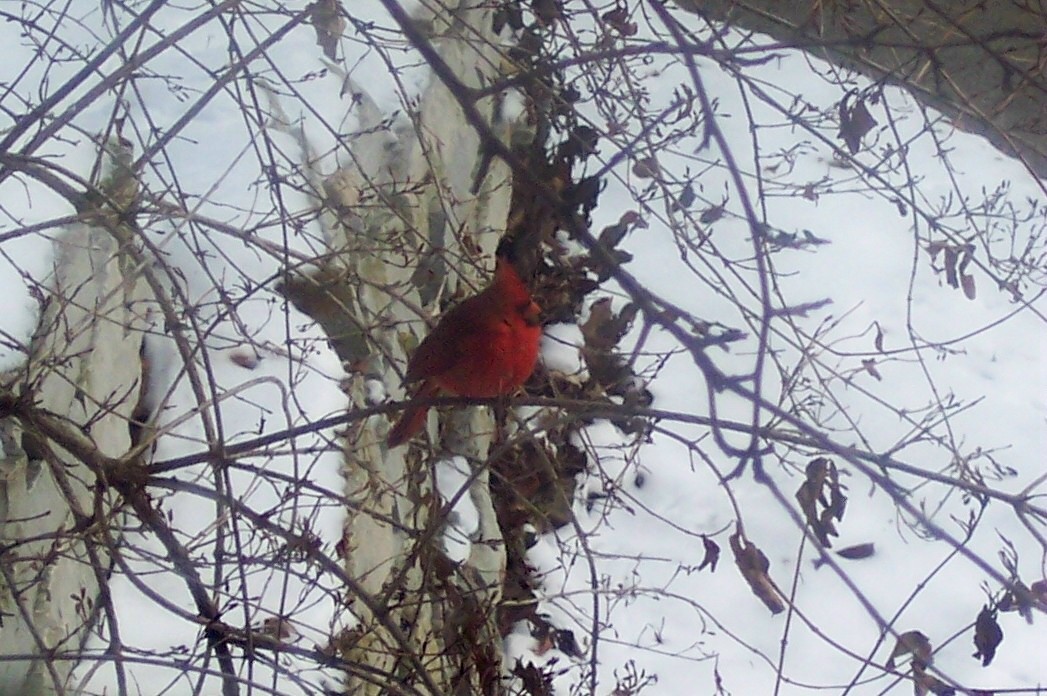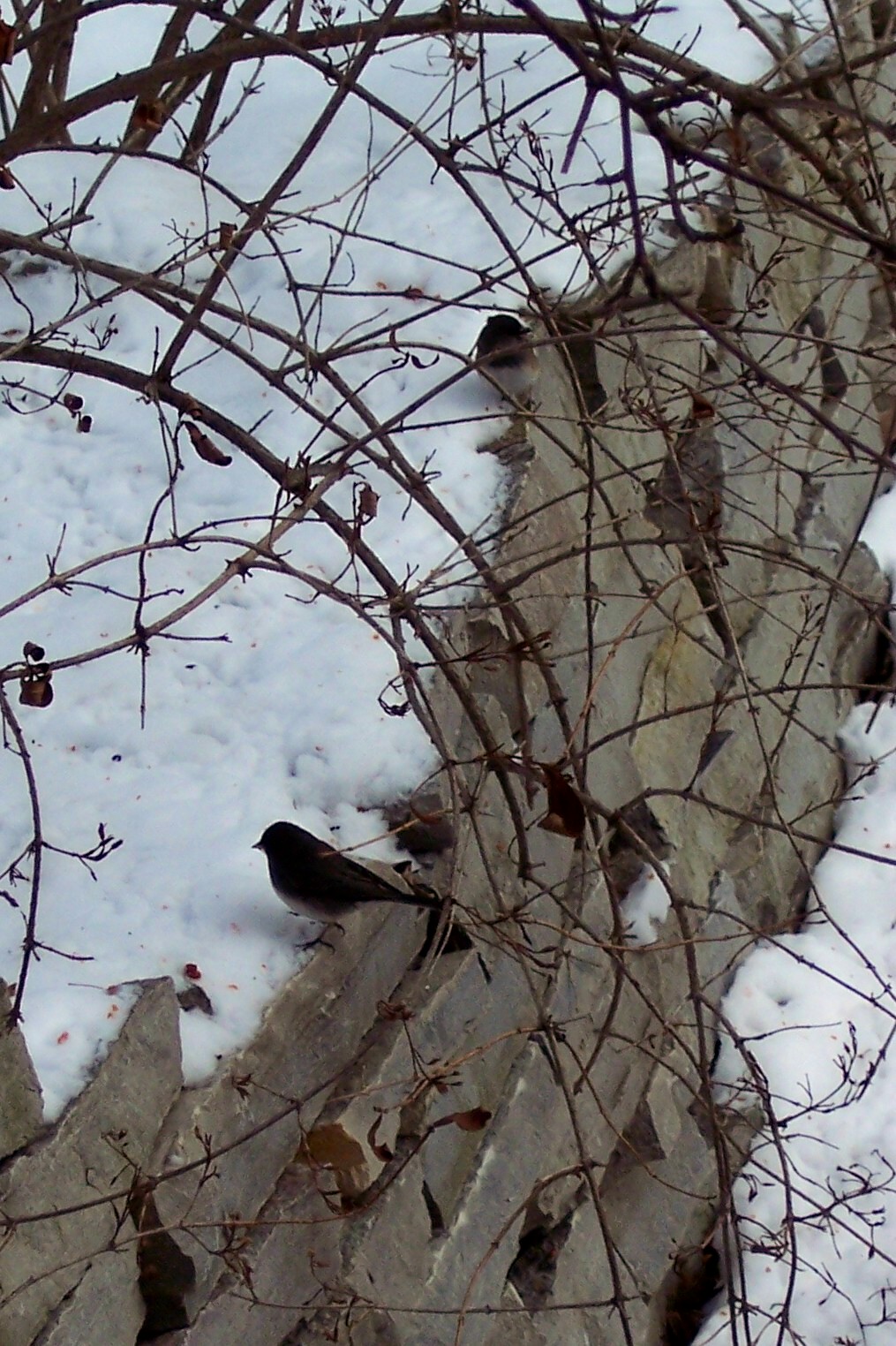Birds
Strawberries | Recipes | Pictures | Writing | Legends
Birds
This will be slow going for a while, but I want to learn more about our neighborhood birds, so when I see one and have some time to identify it and look it up, I will post it here. I tend to retain information better after I've categorized it and written it down. Many thanks to http://www.whatbird.com/ which has an awesome engine for identifying birds and to http://en.wikipedia.org, which is a great way to let other people do your research for you. The pictures are mine, most of them taken out a dirty window.
Eastern Bluebird - January 2, 2008
It seems the Eastern Bluebird stays around the perimeter of Lake Erie for the whole winter. They are often in the crabapple tree that is outside my office window. The top picture is a male. The bottom one is a female. The females are slightly more gray, but they still have the pretty rust-colored chest and the white belly. By the 1950's the bluebird population, which is part of the thrush family, had declined enough to reach critical status due to competition with non-native species like the house sparrow, as well as a loss of habitat caused by the clearing of dead trees and fence railing. Birding enthusiasts worked to save them by providing bluebird houses. They are now listed as a species of least concern.


House Finch - January 2, 2008
The house finch seems to be the most frequent visitor to our crab apple tree. The female is pretty plain looking, but the male has the loveliest bit of rust about him. This is another picture taken from my office. Both of these are males. According to wikipedia, the house finch was originally native to the southwest US, but were sold in the 1940s in New York as the Hollywood finch. Many shop keepers released their birds into the wild to avoid prosecution, and the finch population thrived in its new location.

Hairy Woodpecker - January 3, 2008.
I think this is a Hairy woodpecker. While the markings are similar to a Downy, the Downy is supposed to have a smaller beak and body. Only males have the red spot on the back of their heads. This red badge is a source of inspiration for several Native American tales. This little guy hangs out in the dead tree that is on the other side of our driveway. This picture is taken from Carl's office window. According to http://depts.washington.edu/natmap/facts/downy_woodpecker_712.html, woodpeckers have special feathers around their nostrils to keep them from breathing in woodchips. They also have special spongy material between their beak and head to protect its brain from trauma when it hammers into a tree.

Northern Cardinal (male) - January 4, 2008
I saw a female earlier in the day, but didn't get a picture of her. I knew the cardinal was Ohio's state bird, but it seems it is also the state bird for North Carolina, West Virginia, Kentucky, Indiana, Illinois, and Virginia.

Slate-colored Junco (Snowbird) - January 4, 2008
This is a dark-eyed Junco, which is a type of sparrow. They winter in this area, but will disappear in the spring, hence the name Snowbird. They are slate gray on the top and white on the bottom. Their beak is yellow (or apparently pinkish). These guys were hanging out on our retaining wall.

Spring brings a whole new crop of birds, and I need to get pictures and info for:
Gold Finch
Kingfisher
Great Blue Heron
House Sparrow
Chipping Sparrow
Tufted Titmouse
Blue Jays
Grackle
Starling
Gray Catbird
Downy Woodpecker
Red-Bellied Woodpecker